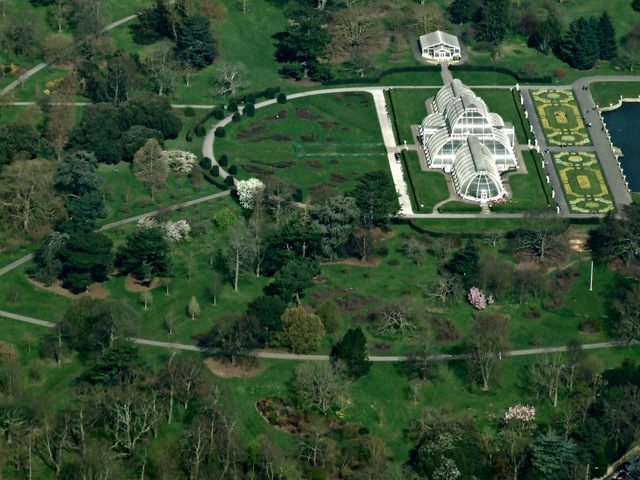Image: Kew Gardens from the air, © Thomas Nugent, Creative Commons (CC BY-SA 2.0)
Using data gathered from across West London, including Kew Gardens’ own weather station, researchers have built climate models to predict Kew’s future climate. This alongside global tree data and information from Kew’s plant collections has been used to assess the resilience of Kew’s Living Collections. The data reveal that 30 per cent, and possibly even more than 50 per cent of Kew’s trees could be vulnerable to the changing, drying climate by 2090. Trees at risk include English oak (Quercus robur), common beech (Fagus sylvatica), silver birch (Betula pendula) and holly (Ilex aquifolium).
By 2050, London’s climate is expected to be similar to present-day Barcelona, so the time to start adapting is now. Kew Gardens is already sourcing more resilient species such as cherry hackberry (Celtis cerasifera), native to China; Montezuma’s pine (Pinus montezumae), native to Central America; and spoon oak (Quercus urbani), native to Mexico.
The Gardens are also striving to achieve genetic diversity among native species. The common oak, for example, is found not only in Britain, but across Europe, and as far as the Eurasian steppe. These oaks have a natural resilience to the stresses of hotter conditions and drought, so have a higher chance of surviving the climates of the future. Seeds from beech trees collected from Romania in 2023 have been planted in the Arboretum nursery.
Kew Gardens sees the Landscape Succession Plan as a blueprint for urban spaces, botanic, public and private gardens all over the United Kingdom. You can find the full report here


